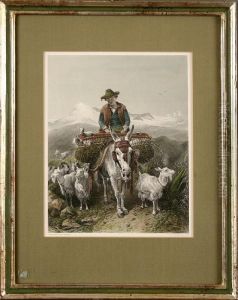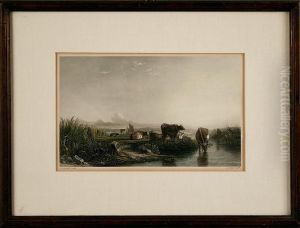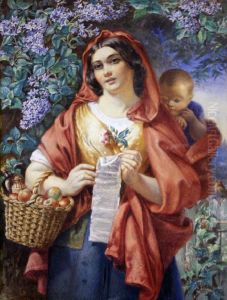Charles Cousen Paintings
Charles Cousen was an English engraver, born in 1819 in Leeds, Yorkshire. He is known for his distinguished work in the field of steel engraving, a popular method of printmaking during the 19th century. Cousen's skills were largely self-taught, and he worked on both landscapes and subject pictures, contributing to the dissemination of works by various prominent artists of his time through his engravings.
Cousen's career began in earnest when he moved to London, where he became an apprentice to the well-known engraver John Pye. Under Pye's mentorship, he honed his craft and gained exposure to the works of leading artists, including J.M.W. Turner. Cousen's engravings of Turner's paintings, in particular, brought him considerable recognition. He reproduced several of Turner's works for publications such as 'The Art Journal' and 'The Illustrated London News', which were instrumental in bringing the art of Turner and others to a wider public.
Throughout his career, Cousen was involved in several important projects. He contributed to the prestigious 'The Art Journal' by engraving paintings by artists such as Sir Edwin Landseer and John Everett Millais. His work was characterized by its delicate lines and attention to detail, which captured the nuances of the original paintings. The engravings were highly regarded for their artistic quality and technical precision.
Charles Cousen's dedication to his craft helped to elevate the status of engraving as an art form during the Victorian era. He was part of a generation of engravers who worked diligently to ensure that the public had access to high-quality reproductions of important artworks. Through his engravings, he played a vital role in art education and the popularization of art appreciation among the middle classes.
Cousen passed away in 1889, leaving behind a legacy as one of the skilled engravers of his time. His contributions to the field of printmaking remain significant, as they helped to document and share the visual culture of the 19th century with a broad audience. His work continues to be studied and appreciated by art historians, collectors, and enthusiasts of Victorian art and engraving.


